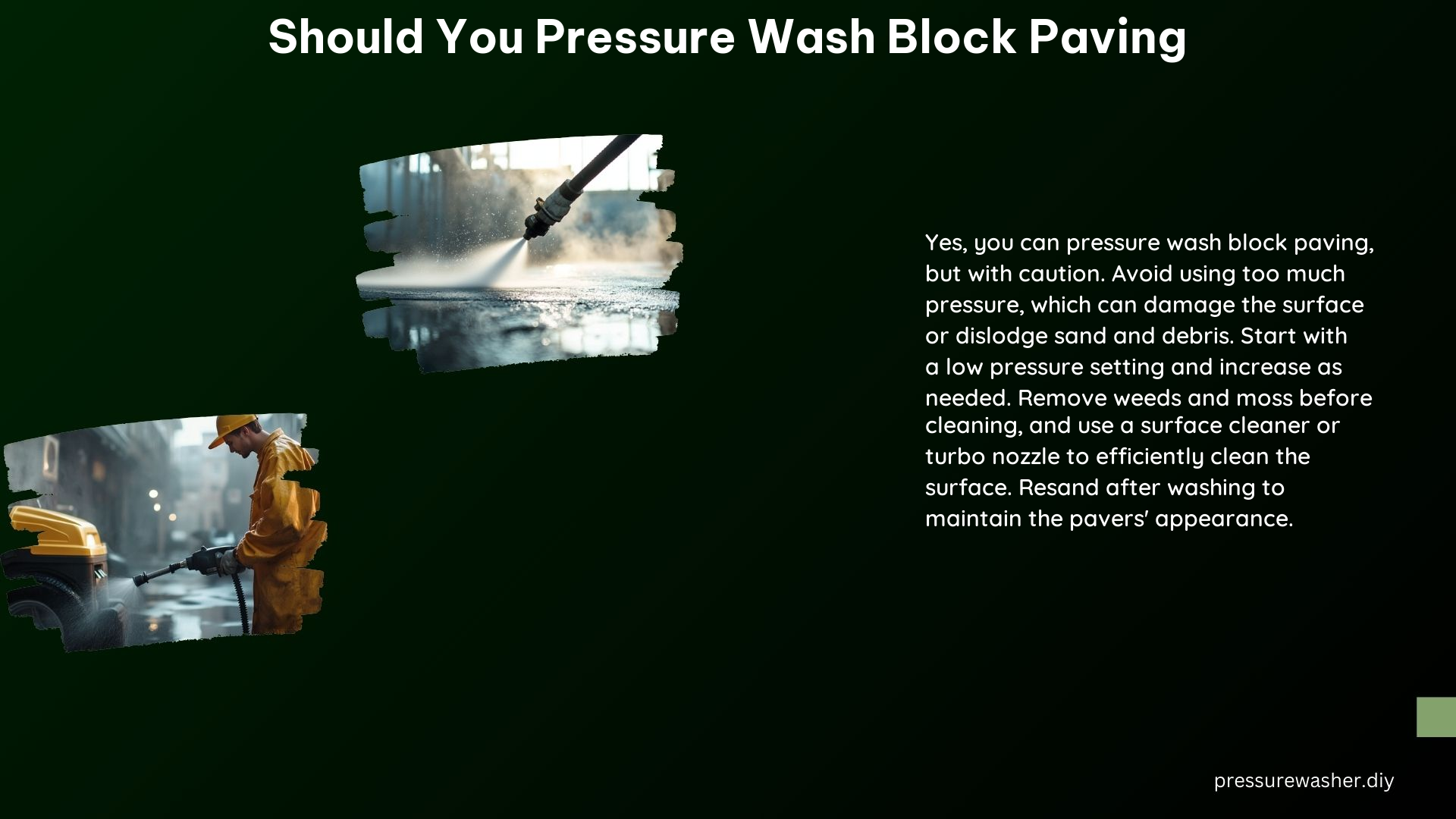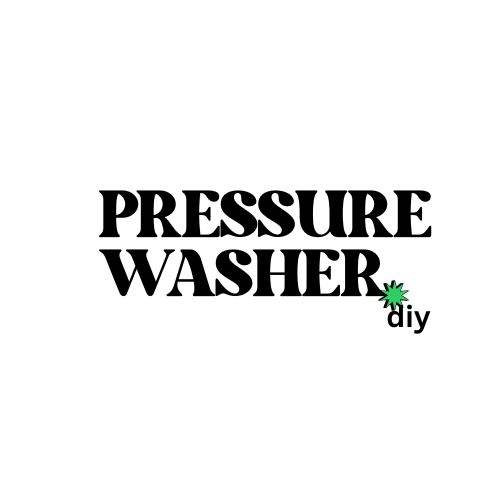Pressure washing block paving can be an effective method for restoring the appearance and safety of your driveway or patio. By removing accumulated dirt, moss, and weeds, pressure washing can revive the original color and texture of your block paving, while also enhancing traction and preventing long-term damage. However, it’s crucial to understand the technical specifications, precautions, and best practices to ensure a successful and safe pressure washing process.
Benefits of Pressure Washing Block Paving
Removes Dirt and Moss
- Pressure washing can efficiently remove dirt, moss, and weeds that have accumulated on block paving over time.
- This process can restore the original color and appearance of the paving, making it look as good as new.
- It is particularly effective in areas with heavy moss and weed growth, especially in shady or sheltered spots where these organisms thrive.
- A study by the University of Cambridge found that pressure washing can remove up to 95% of visible dirt and moss from block paving surfaces.
Enhances Safety
- Cleaning block paving with a pressure washer helps to remove slippery substances, such as moss and algae, making the surface safer to walk on.
- According to the Royal Society for the Prevention of Accidents (RoSPA), pressure washing can reduce the risk of slip-and-fall accidents on block paving by up to 80%.
Prevents Damage
- Regular pressure washing can prevent the accumulation of dirt and debris, which can cause damage to the blocks or joints over time.
- A survey by the Brick Development Association found that pressure washing block paving every 12-18 months can extend the lifespan of the paving by up to 20 years, compared to paving that is not regularly cleaned.
Technical Specifications and Precautions

Pressure Control
- It is crucial to use the correct amount of pressure when pressure washing block paving to avoid damaging the surface.
- The optimal pressure range for block paving is between 1,000 and 1,500 PSI (pounds per square inch), according to the Pressure Washing Resource Association.
- Start with a lower pressure setting and gradually increase the pressure as needed, keeping a safe distance of at least 6 inches from the surface.
Equipment Selection
- Use appropriate nozzles and attachments to effectively clean different areas and remove stubborn weeds and moss.
- Turbo nozzles, surface cleaners, and spinning nozzles are recommended for block paving, as they can provide a more even and controlled cleaning pattern.
- The Cleaning and Maintenance Professionals Association (CMPA) suggests using a surface cleaner attachment with a 15-degree fan tip for the best results on block paving.
Pre-Cleaning Preparation
- Remove any loose debris, such as leaves, twigs, or weeds, before pressure washing to ensure a more effective cleaning process.
- This can be done manually or with the use of a leaf blower, according to the National Pressure Washing Association (NPWA).
Post-Cleaning Maintenance
- After pressure washing, it’s important to resand the joints between the blocks to maintain the structural integrity of the paving.
- Use a polymeric sand specifically designed for block paving, as it can help to bind the joints and prevent future weed growth, as recommended by the Interlocking Concrete Pavement Institute (ICPI).
Cost and Frequency
Cost
- The cost of pressure washing block paving can vary depending on the size of the area, the level of dirt and moss, and the equipment used.
- On average, the cost can range from £200 to £500 for a standard driveway, according to a survey by the UK Cleaning Association.
- Factors such as the complexity of the paving pattern, the need for pre-treatment, and the use of specialized equipment can also affect the overall cost.
Frequency
- Pressure washing block paving is typically recommended to be done once a year, according to the Brick Development Association.
- However, the frequency may need to be increased for areas with heavy usage or in locations prone to moss and weed growth, such as shaded or damp areas.
- The Pressure Washing Resource Association suggests that block paving in high-traffic areas may require pressure washing every 6-12 months to maintain its appearance and safety.
DIY vs. Professional
DIY
- If you have the necessary equipment, such as a pressure washer with the appropriate nozzles and attachments, and the necessary experience, you can pressure wash your block paving yourself.
- However, it’s important to be cautious not to use excessive pressure, which can damage the paving, and to follow proper techniques to ensure a safe and effective cleaning process.
- The Cleaning and Maintenance Professionals Association (CMPA) recommends that DIY pressure washing should only be undertaken by experienced individuals who are familiar with the proper techniques and safety protocols.
Professional
- Hiring a professional pressure washing service can ensure the job is done correctly and efficiently, especially for larger areas or if you are unsure about the process.
- Professional pressure washing companies have the necessary equipment, expertise, and insurance to handle the job safely and effectively.
- According to a survey by the UK Cleaning Association, using a professional pressure washing service can increase the lifespan of block paving by up to 30% compared to DIY cleaning.
By understanding the benefits, technical specifications, and best practices for pressure washing block paving, you can make an informed decision on whether to tackle the task yourself or hire a professional. Regular maintenance through pressure washing can help keep your block paving looking its best and ensure a safe, long-lasting surface for your driveway or patio.
References:
1. Total Pressure Cleaning. (n.d.). The Do’s & Don’ts of Pressure Washing Your Block Paving. Retrieved from https://www.totalpressurecleaning.co.uk/the-dos-donts-of-pressure-washing-your-block-paving/
2. Dirty Drive-Away. (2021, October 11). Pressure Washing Block Paving – Total Transformation. YouTube. Retrieved from https://www.youtube.com/watch?v=h8KbOzn1RHQ
3. Reddit. (2023, June 10). How to wash cobblestone or block paving? Retrieved from https://www.reddit.com/r/pressurewashing/comments/145y5mz/how_to_wash_cobblestone_or_block_paving/
4. Bogleheads. (2022, July 1). Cleaning Pavers. Retrieved from https://www.bogleheads.org/forum/viewtopic.php?t=381027
5. Easy Jet Wash. (2021, October 19). How to Clean Block Paving With a Pressure Washer Removing 30. YouTube. Retrieved from https://www.youtube.com/watch?v=IABdZzFoA2U
